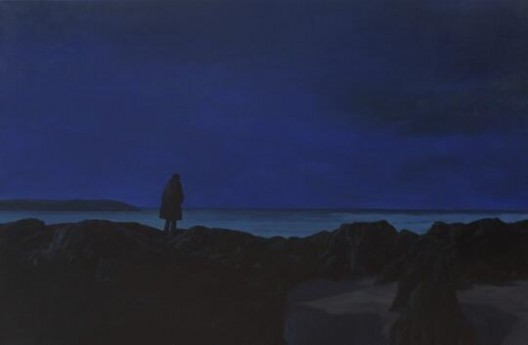You Jin & Zhang Yingnan
AYE Gallery
Zhou Dunyi, a famous ideologist in the Northern Song dynasty, mused in his Tai Ji Diagram that at the beginning of the universe it was Wuji, then it evolved into Taiji, that is, from infinitely small to infinitely vast. The process of this movement is called motion, and the infinite motion is Yang, which can be understood as the inevitable generation of energy and light in the process of movement and development. When the universe develops to close to infinity-still developing but almost static-compared with the previous development, it is said that development(motion) is extreme and relatively static. This weakened state of energy and light is called Yin. Wang Fuzhi, a thinker in the late Ming and early Qing dynasty, described Yin and Yang, Motion and Motionless, as Yang wasn’t produced by movement; Yin didn’t appear after motionless; There were no Yin and Yang in nature, but the movement brought them about.
Chinese Taoist philosophy also believed that the relationship between motion and motionless, or Yin and Yang, is mutual conversion. Similar theory is found in Zen philosophy, where motion and motionless can be merged. Wang Wei, a poet in Tang dynasty wrote in his poem, The Warbler Ravine, “In quiet hear how bay-flowers fall to the ground, the vernal hills at night are void around, at times the birds are startled by the moon, whose climb is heard in the dale with a warbling tune.” The poet conveyed the silence of nature by depicting distant rustling sound of the night forest. In another poem Wangchuan Quatrains, Wang Wei described his stay in a quiet room, enjoying warblers chiming on the willows and raindrops trickling down the corridors, where motion is engendered by the motionless. Later, when the sound of warblers and raindrops faded and the room became still again, reaching the state of zen.
You Jin and Zhang Yingnan, the two artists whose recent artworks will be presented at AYE Gallery, are very distinguished in style: One is motionless, and the other is motion. You Jin’s artworks are filled with tension. The sense of motion and velocity of his images break the spatial boundary and extend beyond the canvas. Zhang Yingnan’s works are serene and mysterious, which seems to resonate with a scene buried deep inside one’s heart, or a midnight dreamscape déjà vu. However, artworks of both artists explore the fusion and morphs between motional and motionless, which blend into an antagonistic harmony.
You Jin’s new artworks for this exhibition continued his previous composition showing diverse perspectives of the space. He discusses the influence of Chinese and Western Modernism on his art. The whole and broken linear symbols making up the eight trigrams in The Book of Changes is the evolution of time and space; The effect of the movement between the sun and the moon towards the earth, the constant shifting state of the infinite universe. The varied landscape of modern civilization is also intertwined with the Eight Trigrams, caught up in the cosmic force. Life is ephemeral like mayflies, or tidal waves, or the open and closed state of strings. Everything generates energy in the constant vibration of strings, everything ranging from a photon or an electron to the interstellar space. Strings opens and closes in a reciprocal manner. Everything is co-dependent and relatively cause-effectual.
Zhang Yingnan’s works first strike one as serene and solitary. This kind of serenity reminds one of Edward Hopper, a realistic artist during The Great Depression. Hopper’s lonely characters wandering about in their own world, while Zhang Yingnan’s scenery captured what seems to be his own muttering in slumber. Dust Laden Memory depicted the deserted classroom from artist’s childhood. The dark interior of the steeple buries a distant memory in the depth of heart, while weeds crawling underneath the steeple. Melt and A Door in the Cave both show a narrow space in a cave. However, a door or a suitcase on the image suggests a portal to another dimension, breaking the silence, altering the momentum. Monsoon, like Kawabata Yasunari’s words, is melancholic and poetic. A dark blue sky and solidified rocks dominate the picture. A man stands on the coastal rocks that stretches into the night and lefts us with a lonely silhouette. In front of him, lies the soothing sea that is bound to be disturbed.
The two artists ingeniously break through the boundary of motional and motionless, seeking the original truth from individual experiences to the omnipotent universe.



